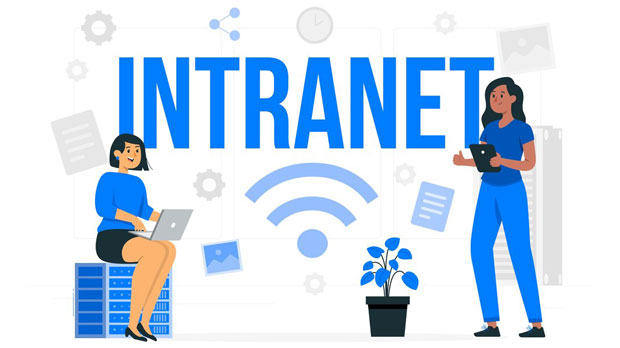In today's digital age, streaming platforms such as Netflix, Hulu, and BBC iPlayer provide a wealth of entertainment options. However, these services often impose geographical restrictions, blocking access to content depending on your location. For instance, Netflix’s catalog varies across regions, limiting what you can watch in certain countries. To bypass these restrictions, many users turn to unblock websites proxy services. By using a proxy, you can hide your actual location and virtually appear to be in a different country, unlocking access to exclusive content. This article explores the mechanics of using unblock websites proxies to access geo-restricted streaming platforms, highlighting the benefits, technical setup, and potential challenges. Understanding Geo-restrictions in Streaming PlatformsGeo-restrictions, or geo-blocking, are a common practice among streaming services. These platforms tailor content based on the user's location due to various reasons such as copyright laws, licensing agreements, or regional regulations. As a result, the content available in one country may be different from what’s offered in another. For example, Netflix in the U.S. may feature movies and shows that are unavailable in the UK or Canada.This limitation can be frustrating for users who want to access a broader variety of content. Streaming platforms often utilize the user's IP address to determine their location. Once identified, they restrict or offer a limited selection based on that geographical region. To solve this problem, users can make use of unblock websites proxy tools.What is a Proxy and How Does It Help Unblock Websites?A proxy server is a tool that acts as an intermediary between your device and the internet. When you use a proxy, your internet traffic is routed through this intermediary server, which can make it appear as though you're accessing the web from a different location. For example, if you're in a country where Netflix is restricted, you can use a proxy server located in a country where Netflix is available, effectively masking your actual location.There are different types of proxies, including HTTP, HTTPS, and SOCKS proxies. To unblock geo-restricted content, HTTPS proxies are generally the most effective as they encrypt your traffic, providing additional security while allowing you to access content from anywhere.Steps to Access Geo-restricted Streaming Content Using a Proxy1. Choose a Reliable Proxy ProviderThe first step is selecting a reputable unblock websites proxy service. It is essential to opt for a service that offers high-speed servers in the region of your choice, ensuring you have access to the streaming content you need. Some proxy services offer free options, but paid services often provide better reliability, security, and performance.2. Set Up the Proxy on Your DeviceOnce you’ve chosen a proxy service, you will need to configure it on your device. This setup varies depending on the type of device (Windows, macOS, Android, or iOS) you’re using, but the process generally involves entering the proxy server’s IP address and port number into your internet connection settings. You may need to authenticate the connection using a username and password if required by your service provider.3. Choose the Appropriate Server LocationAfter setting up the proxy, you will need to select the server location. If your goal is to access U.S. Netflix, for example, you would select a proxy server based in the United States. The proxy will route your internet traffic through this server, making it appear as though you are browsing from the U.S., bypassing any geo-restrictions on Netflix or other streaming platforms.4. Test Your ConnectionBefore streaming content, it is crucial to test whether the proxy is functioning correctly. You can do this by visiting a website that shows your IP address and checking if it matches the country of the proxy server you selected. If the IP address is consistent, the proxy is working, and you can proceed to access the geo-restricted content.5. Start StreamingOnce everything is set up, you can access streaming platforms like Netflix, Hulu, or BBC iPlayer as though you are located in the country where the content is available. Simply log in to your streaming account and enjoy the full range of shows and movies available in the selected region.Benefits of Using Proxies for Streaming Services1. Access to Exclusive ContentThe primary advantage of using a proxy to unblock websites is access to a broader library of content. By bypassing geo-restrictions, users can watch movies, TV shows, and documentaries that are otherwise unavailable in their country. This opens up a wealth of entertainment options, allowing you to enjoy your favorite content from various countries.2. Enhanced Privacy and SecurityUsing a proxy not only helps you bypass geo-restrictions but also adds an additional layer of privacy and security. Since the proxy hides your real IP address, it makes it harder for third parties to track your online activities. This added privacy is especially important for users who are concerned about online surveillance or data collection.3. Avoiding ThrottlingMany internet service providers (ISPs) limit or throttle streaming speeds, especially during peak hours. By using a proxy, you can avoid bandwidth throttling and enjoy smoother, faster streaming without interruptions. A reliable proxy can help maintain a stable connection to streaming platforms, ensuring high-quality playback.Challenges and Limitations of Using Proxies1. Slower SpeedsWhile proxies can help unblock geo-restricted content, they may also cause a slight reduction in internet speed. This happens because your data is routed through an additional server, which can introduce latency. To minimize this, choose a high-performance proxy service with fast servers.2. Detection by Streaming PlatformsStreaming services such as Netflix have become more adept at detecting and blocking proxy traffic. While proxies can bypass many geo-restrictions, some streaming platforms actively identify and block proxy servers. To avoid this, use a proxy provider that frequently updates its IP addresses to stay ahead of detection measures.3. Limited Device CompatibilitySome streaming platforms, like Netflix, may not be accessible via certain devices when using a proxy. For example, streaming via a smart TV or gaming console may be more challenging than using a desktop computer or smartphone. It's essential to check whether the proxy is compatible with your preferred streaming device.Using an unblock websites proxy is an effective way to access geo-restricted content on streaming platforms like Netflix. By choosing a reliable proxy provider, setting up the proxy server, and selecting the appropriate server location, you can unlock a wealth of content and enjoy seamless streaming. While proxies offer many benefits, such as enhanced privacy and access to exclusive content, they also have limitations, such as potential slow speeds and detection by streaming services. Nonetheless, with the right tools and knowledge, you can enjoy your favorite shows from anywhere in the world.
Oct 16, 2025



































































